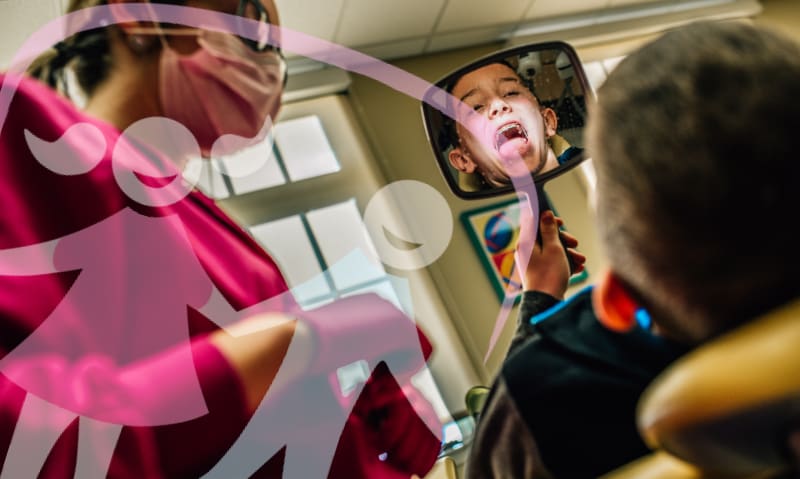Did You Know There Are Different Types of Orthodontic Treatments for Kids?

Types of Orthodontic Treatments for Kids
Orthodontic treatment can be essential to ensuring that your child’s smile is both healthy and beautiful. Crooked teeth are harder to clean, increasing your child’s risk of tooth decay and gum disease, and may make them self-conscious as they age. Due to this, it’s important to get an orthodontic consultation when your child is about seven years old; this allows your dentist to determine if they’re likely to need orthodontic treatment and to make a preliminary treatment plan.
If you’re about to take your child to their first orthodontic consultation, you’ll likely want to be prepared with the knowledge of what treatments your dentist may recommend. The internet is a great resource, but it can sometimes be hard to ferret out the real facts. To help minimize that struggle, here’s a list of treatments that your dentist may recommend for your child.
Palatal Expanders
This treatment is used to resolve a number of issues in younger children involving the jaw itself or the eruption of their permanent teeth. If your child has an impacted tooth, which is when an adult tooth is blocked from erupting by other teeth, a palatal expander can create more room in their mouth, potentially allowing the impacted tooth to erupt in its proper place. Similarly, if there is crowding in your child’s mouth, expanders can create more space for adult teeth to come in, eliminating the need for tooth extractions. It can also simply widen the upper jaw to resolve a crossbite, where the upper jaw is too narrow to fit correctly into the lower jaw.
The bones in your child’s palate haven’t fused yet, so the expander widens the upper jaw by exerting pressure outward to spread the palate apart. After the expander is slowly stretched to the planned size, it’s left in place for a few months to give the bone time to grow. While this may sound intimidating, expanders and braces work on the same principle, so the two treatments cause about the same level of discomfort: a little pressure or soreness right after each adjustment. Expanders have a number of long-term benefits, from reducing the amount of time your child will need braces, if they need them at all, to making breathing easier and preventing more drastic treatments like tooth extractions.
Braces
Once your child’s permanent teeth are in, they may need braces to fix gaps, overcrowding, misaligned bites, or crooked teeth. In addition to making their teeth harder to keep clean and potentially harming their self-esteem, these issues can cause your child to have regular headaches, chewing difficulties, and uneven wear on their teeth. Braces solve these problems by applying pressure to the teeth over time, which your child’s dentist slowly increases by tightening wires at regular visits. This causes your child’s teeth to move into the best position.
Your child may experience some discomfort or soreness after each adjustment, but this is short-term and easily managed with over-the-counter pain medication. The most difficult part of braces is ensuring that your child stays away from foods that can harm their braces and maintaining proper dental hygiene, as it can be hard to clean around the wires. Treatment may take anywhere from one to three years, depending upon the complexity of their case; once it’s complete, your child’s smile will feel and look better.
Invisalign
If you have a teenager who is self-conscious about the appearance of braces on their teeth, Invisalign may be a great option. The aligners can treat almost any dental issue that traditional braces can, but they come with a range of benefits. They’re nearly invisible when your teen is wearing them, and they’re both comfortable and removable, allowing them to eat whatever they want and making dental hygiene much easier.
The aligners must be worn for at least 22 hours each day in order to do their job, so the aligners for teens come with a discrete blue dot on the lower aligner, allowing you to ensure your teen is wearing them. Like braces, Invisalign works by applying pressure to move your teen’s teeth into the desired position. Every week or two, your child will pop in a new aligner, which will cause their teeth to shift slightly. Generally, treatment takes a year to a year and a half, but in more severe cases, it can take two years.
Retainers
Retainers are worn by children and teens who have completed orthodontic treatments like braces or aligners. They prevent your child’s teeth from shifting back into their previous positions; ideally, retainers should be worn every night for several years and every few nights for the rest of your child’s life. Though this is one of the most common uses for retainers, they can solve a few other issues. Specialized retainers can help prevent your child from grinding their teeth at night or correct tongue thrust, an issue where a child’s tongue thrusts between their teeth when they speak rather than moving to the top of their mouth.
Although taking your child to their first orthodontic appointment may seem daunting, it’s a great way to get an idea of what future treatments they may or may not need. Even better, getting these treatments are an important part of helping them cultivate and maintain great oral health and self-confidence, both of which will impact them for the rest of their life.